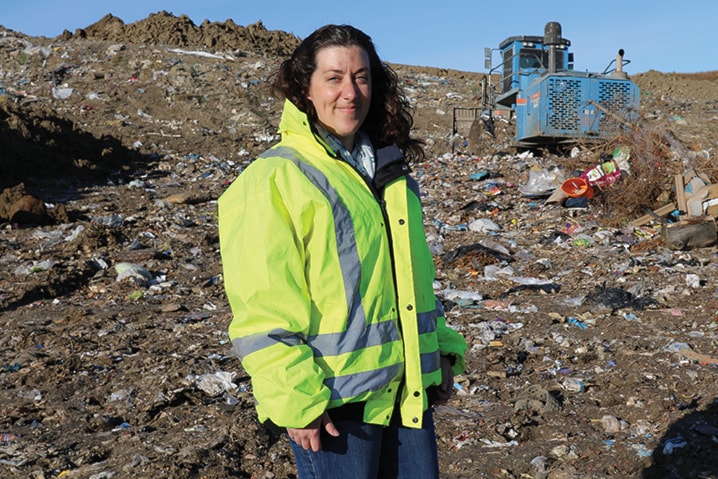This is the first in a series of stories on the City of Red Deer’s environmental programs and its initiatives for the future.
BY CRYSTAL RHYNO
Advocate staff
Day after day, trucks loaded with everything from newspapers, plastic bags, cardboard boxes to clothing make one last stop at Red Deer’s regional landfill.
The sheer volume of waste and the amount that could be recycled is enough to stop you in your tracks.
Last year, on average the city landfilled 300 tonnes of waste per day.
A whopping 91,313 tonnes of waste of all kinds went into the landfill in 2013, compared to 90,266 in 2012 and 86,277 in 2011.
About 87 per cent of the landfill waste comes from Red Deer residents and businesses. The rest comes from the towns within Red Deer County (including Sylvan Lake, Penhold and Bowden, for which there are formal agreements), and Blackfalds. Waste is also accepted from Innisfail, Delburne and Elnora.
In Red Deer alone, nearly 75,000 tonnes of trash was thrown out. That translates to roughly 812 kg per capita. In 2011, the Alberta average was 1,122 kg per capita and the national average was 777 kg of waste per capita. (These numbers reflect combined business and residential waste, divided by the number of residents in the city.)
The city wants to reduce the per capita amount to 500 kg by 2023.
A year after adopting a master plan to tackle garbage, Janet Whitesell, the city’s Waste Management Department superintendent, said the city and its residents are making headway with waste reduction.
The largest generator of waste is the commercial sector, which contributes 63 per cent of all items dumped at the landfill.
Thirty per cent of waste comes from single-family residential and seven per cent from multi-family residential.
The city is laying the groundwork for a plan to divert and reduce business sector waste.
Whitesell said many municipalities focus on residential waste because that’s where they have the most control. She anticipates this will change because more people and businesses are becoming interested in sustainability.
The total weight of solid waste from single family homes decreased slightly to 180 kg per capita in 2013 from 183 kg in 2012. The city’s goal is to get the number down to 164.7 kg per capita by 2015.
Red Deer’s current landfill began accepting waste in 2001. It will run out of space in 35 to 40 years under the current trends. Whitesell said no one wants to get to that point and that’s why the city’s diversion and recycling programs are crucial.
The facility has a large diversion area. Residents can drop off items to be recycled such as refrigerators, yard waste, gypsum drywall, scrap metal, household hazardous waste, electronics, tires and blue box items. Yard waste and pallets are composted on site.
Whitesell said they are starting to see more growth in these diversion areas. Most of the items are shipped off as part of provincial programs or to recycling facilities.
Some items, like asphalt shingles, get recycled into asphalt pavement near Calgary.
Most toilets collected through the city’s toilet rebate program will be ground down for use in road construction and maintenance at the site.
Fees were lowered at the landfill gate this year to encourage residents to bring in unwanted recyclable items.
Next spring, the city will roll out a new residential organics collections pilot. An estimated that 40 per cent of the garbage thrown out at home is organic waste. While details are still being fine-tuned, Whitesell said some 2,000 residents will take part in the pilot. The pilot program will likely accept food scraps, coffee grinds, Kleenex and soiled paper.
The city is also considering how to process the organics — either on site or through a contractor.
In general, the city intends to tackle the trash problem by staggering new programs and initiatives over the next 10 years.
“Everybody knows the three Rs of reduce, reuse and recycle,” said Whitesell. “But I don’t think people know they are a hierarchy of what’s the best things to do.”
Within the city’s Environmental Master Plan are seven focus areas: waste, water, ecology, air, built environment, transportation and energy. The ambitious plan outlines goals and strategies over the next 25 years to protect the environment.
crhyno@www.reddeeradvocate.com
Coming next Saturday: a look at the recycling program in Red Deer and what the future holds.
